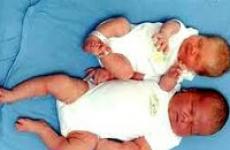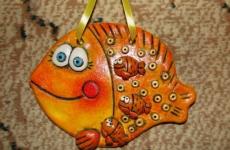Stephen Wolinsky: The Dark Side of the Inner Child. The dark side of the inner child
Moscow STARCLIGHT 2004
Translation from English by O. Asmanova
This book is about moving beyond the trances, outdated strategies and beliefs created in childhood in an attempt to cope with chaos and confusion. It provides many examples and a whole host of wonderful self-discovery and self-healing exercises that will help you free yourself from the trances that control your life and prevent you from being yourself - This is the true process of transcendence, or breaking out of trance. I hope this process brings you joy. The summer version of the book is more applicable in practice and is addressed not only to professionals (the exercises can be used by psychotherapists when working with patients), but also to a wide range of readers.
Wolinsky Stephen. The dark side of the inner child. Next step. Per. from English / Stephen Wolinsky - M.: STARKLIGHT, 2004. - 184 pp. ISBN5-9633-0001-0 UDC 159.9 BBK 88.6 B67
"AWAKENING" – that's the key word! We wake up from dreams in which we saw the world from a familiar point of view, in a familiar perspective. Everything looks completely different... suddenly we were freed from the previous perception, and the world became different for us. What is the meaning of your awakening? The fact is that you yourself have changed.
FeastVilayatInayatKhan
Stephen Wolinsky. The Dark Side of the Inner Child: Next Step 1
Preface 6
Prologue 8
Something about the inner child 8
Inner child 9
Quantum Psychology 9
1. How did it start for me 11
New understanding of trance and hypnosis 11
2. The beginning of the end of the dark side of the inner child 14
Where does the inner child come from? 14
The Dark Side of the Inner Child 15
3. Philosophy of the emergence of trances 17
4. Age-related depression: “fall into childhood” 20
Charge 21
Next Step: How to Deal with Age Regression 23
5. Leaving for the future 25
1. Imagination of a coming catastrophe 25
2. Fantasies 25
3. Planning 27
4. “Explanations” 27
5. “Love Trap” 28
How do these trances arise? 28
Next step: How to cope with “going into the future” 28
6. Detachment: away from yourself and others 32
1. Insensitivity 32
2. Disappearance 32
3. I am not my body 32
4. Merger 33
Structural and strategic family therapy 34
Married couples 35
Complementary trances of the inner child 35
Next step: How to cope with “detachment” and “merger” 36
How to deal with “shoulds” 38
Where does internal dialogue come from? 39
Principle 1 39
Principle 2 39
Principle 3 40
Next Step: How to Deal with the Trance of Internal Dialogue 40
8. Repression: not seeing what is 42
Distorted understanding 42
Body repression 43
Therapeutic approach 43
Principle 4 44
Next Step: How to Deal with Repression 44
9. Illusions: seeing, hearing and feeling what is not there 46
Selective trannies 46
"Everything is wonderful!" or “Everything is terrible!” 47
Illusions, going to the future, fantasies 47
Principle 5 48
Complementary trannies 48
Mind Reading 49
Principle 6 49
Next step: How to deal with illusions 49
10. Helplessness 51
Helplessness and Chaos 51
Principle 7 51
Three types of helplessness 52
1. Helplessness from an impossible task 52
2. Overgeneralization 52
3. Helplessness in relationships 52
4. Controlling helplessness 53
Next Step: How to Deal with Helplessness 53
How to deal with helplessness in relationships 54
11. Sweet dreams 55
Dream of Identification 56
Next Step: How to Deal with Trance Dreams 57
How to Deal with Identification Trance 57
12. Amnesia 59
Working with yourself 59
Hypermnesia 60
Next step: How to deal with amnesia 60
13. Sensory distortion: I can't feel anything 62
1. Emotional sensory distortion 62
2. Hypersensitivity 62
3. Sensory distortion, energy dissipation 63
Principle 8 63
Principle 9 63
Next Step: How to Deal with Sensory Distortion 64
14. Pseudo-spirituality 65
Introduction 65
First level 66
Three basics of the first level of trance 66
Problematic conditions of an adult 66
Problematic conditions of an adult 67
Second level 68
Problematic conditions of an adult 68
Women and power 68
Problematic condition of an adult 68
The third level is actually pseudo-spirituality 69
Problematic conditions of an adult 69
Baby tranny 69
Transpersonal transference 69
Over-idealization of other people 70
Idealization of the system 70
Transfer of values and beliefs 70
Lifestyle Transfer 70
Pseudo-spirituality and rationalization 70
Transpersonal Interdependence 71
Transferring the image of God to the beloved 71
Transferring responsibility for one's own spiritual growth to the guru 71
Expulsion from a sect or spiritual group 71
"I am chosen!" 71
Idealization of pain 72
Social Spiritual Therapy: Karma Theory 72
Pseudo-spirituality of the theory of karma 72
Review of varieties of supertranspersonal pseudo-spiritual rationalization 72
Next Step: How to Deal with Pseudo-Spirituality 77
Homework 78
Epilogue. Tao of Chaos 79
Appendix 1. Trigger, or Changing Buttons 81
Summary of Methods 84
Principle 10 84
Principle 11 85
Principle 12 85
Appendix 2. Creative use of trances 86
Creative anesthesia 86
1. Characters 86
2. Discrimination 86
3. Shutdown 86
4. Expansion of sensations 87
Sexy tantra 87
5. Intervals between sensations 87
Appendix 3. Creative context: you are not your problem 88
Expanded Healing Context 88
Clarifying goals and intentions 91
Going beyond the “therapist” subpersonality 92
Explore Your Own Trance 93
Exercise 1 94
Exercise 2 94
Exercise 3 95
Appendix 4. Marriage of East and West 96
Law of Paradoxical Change 97
Appendix 5. Rip the Veils: Destruction of Phobia 100
Appendix 6: Using Archetypes 101
Mother Archetype 101
Snake Archetype 101
Seeker Archetype 102
Literature 103
This book is about moving beyond the trances, outdated strategies and beliefs created in childhood in an attempt to cope with chaos and confusion. It provides many examples and a whole scattering of excellent exercises in self-discovery and self-healing that will help you free yourself from the trances that control your life and do not allow you to be yourself. This is the true process of transcendence, or breaking out of trance. I hope this process brings you joy. This version of the book is more applicable in practice and is addressed not only to professionals (the exercises can be used by psychotherapists when working with patients), but also to a wide range of readers.
Preface 1
Prologue 2
Chapter 1 - Where it started for me 3
Chapter 2 - The Beginning of the End of the Dark Side of the Inner Child 3
Chapter 3 - Philosophy of the origin of trances 5
Chapter 4 - Age-related depression: “falling into childhood” 6
Chapter 5 - Leaving for the future 7
Chapter 6 - Detachment: Away from yourself and others 9
Chapter 8 - Repression: not seeing what is 13
Chapter 9 - Illusions: seeing, hearing and feeling what is not there 15
Chapter 10 - Helplessness 17
Chapter 11 - Sweet Dreams 18
Chapter 12 - Amnesia 19
Chapter 13 - Sensory Distortion: I Can't Feel Anything 20
Chapter 14 - Pseudo-spirituality 21
Epilogue - Tao of Chaos 26
Appendix 1 - Trigger, or Button Change 26
Appendix 2 - Creative Use of Trances 28
Appendix 3 - Creative context: you are not your problem 28
Appendix 4 - Marriage of East and West 31
Appendix 5 - Rip the Veils: Breaking Phobia 33
Appendix 6 - Using Archetypes 33
Literature 34
Notes 34
Stephen Wolinsky
The dark side of the inner child
Next step
"AWAKENING" - that's the key word! We wake up from dreams in which we saw the world from a familiar point of view, in a familiar perspective. Everything looks completely different... suddenly we were freed from the previous perception, and the world became different for us. What is the meaning of your awakening? The fact is that you yourself have changed.
Pir Walayat Inayat Khan
In memory of John Lennon, poet and singer of quantum consciousness
Christy L. Kennen; Lynn Benefield (proofreader); Donna Ross and Bruce Carter (editors); Eric Marcus; Roberto Assagioli, who created psychosynthesis and developed the concept of subpersonalities; Fritz Perls, creator of Gestalt therapy, for the idea of parts of personalities entering into dialogue with each other; Eric Berne, founder of transactional analysis and creator of the concepts of internal parent, adult and child. I also thank Dr. Albert Ellis, the father of rational-emotive therapy (his thoughts on fifteen types of thought distortions are summarized in Chapter 3 of this book); Matthew McKay, Martha Davis, and Patrick Fanning for their book Thoughts and Feelings: The Art of Cognitive Intervention for Stress. Finally, I want to give a special thank you to Neil Sweeney and his memory for your love, friendship and guidance over nearly twenty years.
Stephen H. Wolinsky began his clinical practice in Los Angeles, California in 1974. He has conducted seminars on Reichian therapy and Gestalt therapy in Southern California. He also studied classical hypnosis, psychosynthesis, psychodrama and transactional analysis. In 1977, he traveled to India, where he spent about six years studying meditation. In 1982, he returned and resumed clinical practice in New Mexico. He began training psychotherapists in Ericksonian hypnosis, NLP and family therapy, as well as conducting year-long training courses in integral hypnosis in psychotherapy and family therapy. Dr. Wolinsky is the author of The Trances People Live in: Healing Techniques in Quantum Psychology and Quantum Consciousness: A Guide to the Study of Quantum Psychology. His fourth book is called The Tao of Chaos: Quantum Consciousness. Volume 2." He is one of the founders of the Quantum Consciousness Seminars and, along with Christy L. Kennen, the founder of the Quantum Psychology Institute.
(Note: To date, a number of other books by Dr. Wolinsky have been published: “Hearts on Fire”, “The Human Way”, “Beyond Quantum Psychology”, etc.).
Preface
I am thrilled to have the opportunity to write the foreword to Dr. Stephen Wolinsky's book, The Dark Side of the Inner Child. This book shows how important and serious working with the inner child is. Dr. Wolinsky helped me better understand my own work.
For many years I was amazed at the powerful “power” of the inner child - but I never fully understood why it was so strong. In Dr. Wolinsky's first book, The Trances People Live In, some children's coping mechanisms are characterized as hypnotic trance states. This model helped me understand that we get stuck in the past because we create the same trances over and over again that protect us from the pain and suffering we experienced in childhood. Memories of past traumas manifest themselves in numerous symptoms, which are commonly called “infantile syndrome.”
Dr. Wolinsky states that since we ourselves have created defensive trances, we ourselves can change them when we become aware of the ways in which we continue to create them. The process I call reviving the inner child is a way to unhypnotize yourself. Imagining our defenseless, vulnerable part of our personality in the form of an inner child and continuing to protect it, the adult within us is forced to remain in a trance. This trance once protected us; now he limits us. I call inner child healing the ability to live in the here and now; To do this, we must remember what strategies we used to suppress our childhood desires, feelings and needs. Once we become aware of these strategies, we can change them.
In The Dark Side of the Inner Child, Wolinsky offers us many tools to understand how we create protective trances that help keep the inner child rigid and frozen.
I have always emphasized that the adult part of our personality plays a critical role in transforming past experiences. Wolinsky talks about the "observer". The “adult” and the “observer” are essentially the same character. It was he who once created protective trances. This observer is the reason that I am I and you are you.
Once we understand that we ourselves are the source of our own frozen and limited life, we will gain new strength, wisdom and responsibility.
Dr. Wolinsky's work serves this noble purpose of liberation from outdated and limiting patterns inherent in the inner child. Consciously or unconsciously, we are always tempted to “objectify” the inner child, as a result of which he begins to live his own autonomous life. After that, we “idealize” him and give him our power. Dr. Wolinsky's book leaves no room for illusions on this topic.
The inner child is not a wonderful and precious creature. By continuing to use the same infantile and outdated patterns of behavior, we cut ourselves off from a vast area of human experience. This area contains great qualities such as curiosity, flexibility, creativity, exuberance and spontaneity. Wolinsky calls the limiting function the dark side of the inner child.
We desperately need a renewed ability to be generous, inquisitive and open. These qualities are not inherent in the inner child, but in a genuine human personality living life to the fullest. By consciously changing our previous ways of surviving (inner child trances), we will gain access to resources that will help us cope with “past traumas”, transform them and integrate them into our present experience. Only then will we live a real, fulfilling life.
I won't say more about the contents of the book because I hope you'll want to read it yourself. It contains a whole scattering of magnificent exercises for self-knowledge and self-healing. Perhaps at times you will find them too difficult - and I would like to inspire you with the strength and courage that will help you continue your work. Expanding consciousness is worth the effort.
I want to thank Dr. Wolinsky for his work in promoting our liberation. It brings together the best and deepest achievements of Eastern and Western thought. At a time when the need for self-knowledge and self-healing is becoming ever more urgent, Wolinsky may be our most welcome and long-awaited teacher.
John Bradshaw
Stephen Wolinsky
The dark side of the inner child
Next step
“AWAKENING” is the key word! We wake up from dreams in which we saw the world from a familiar point of view, in a familiar perspective. Everything looks completely different... suddenly we were freed from the previous perception, and the world became different for us. What is the meaning of your awakening? The fact is that you yourself have changed.
Pir Walayat Inayat Khan Dedication
In memory of John Lennon, poet and singer of quantum consciousness
I thank:
Christy L. Kennen; Lynn Benefield (proofreader); Donna Ross and Bruce Carter (editors); Eric Marcus; Roberto Assagioli, who created psychosynthesis and developed the concept of subpersonalities; Fritz Perls, creator of Gestalt therapy, for the idea of parts of personalities entering into dialogue with each other; Eric Berne, founder of transactional analysis and creator of the concepts of internal parent, adult and child. I also thank Dr. Albert Ellis, the father of rational-emotive therapy (his thoughts on fifteen types of thought distortions are summarized in Chapter 3 of this book); Matthew McKay, Martha Davis, and Patrick Fanning for their book Thoughts and Feelings: The Art of Cognitive Intervention for Stress. Finally, I want to give a special thank you to Neil Sweeney and his memory for your love, friendship and guidance over nearly twenty years.
Stephen H. Wolinsky began his clinical practice in Los Angeles, California in 1974. He has conducted seminars on Reichian therapy and Gestalt therapy in Southern California. He also studied classical hypnosis, psychosynthesis, psychodrama and transactional analysis. In 1977, he traveled to India, where he spent about six years studying meditation. In 1982, he returned and resumed clinical practice in New Mexico. He began training psychotherapists in Ericksonian hypnosis, NLP and family therapy, as well as conducting year-long training courses in integral hypnosis in psychotherapy and family therapy. Dr. Wolinsky is the author of The Trances People Live in: Healing Techniques in Quantum Psychology and Quantum Consciousness: A Guide to Learning Quantum Psychology. His fourth book is called The Tao of Chaos: Quantum Consciousness. Volume 2". He is one of the founders of the Quantum Consciousness Workshops and, along with Christy L. Kennen, the founder of the Quantum Psychology Institute.
(Note: To date, a number of other books by Dr. Wolinsky have been published: “Hearts on Fire”, “The Human Way”, “Beyond Quantum Psychology”, etc.).
Preface
I am thrilled to have the opportunity to write the foreword to Dr. Stephen Wolinsky's book, The Dark Side of the Inner Child. This book shows how important and serious working with the inner child is. Dr. Wolinsky helped me better understand my own work.
For many years I was amazed at the powerful “power” of the inner child - but I never fully understood why it was so strong. In Dr. Wolinsky's first book, The Trances People Live In, some children's coping mechanisms are characterized as hypnotic trance states. This model helped me understand that we get stuck in the past because we create the same trances over and over again that protect us from the pain and suffering we experienced in childhood. Memories of past traumas manifest themselves in numerous symptoms, which are commonly called “infantile syndrome.”
Dr. Wolinsky states that since we ourselves have created defensive trances, we ourselves can change them when we become aware of the ways in which we continue to create them. The process I call reviving the inner child is a way to unhypnotize yourself. Imagining our defenseless, vulnerable part of our personality in the form of an inner child and continuing to protect it, the adult within us is forced to remain in a trance. This trance once protected us; now he limits us. I call inner child healing the ability to live in the here and now; To do this, we must remember what strategies we used to suppress our childhood desires, feelings and needs. Once we become aware of these strategies, we can change them.
In The Dark Side of the Inner Child, Wolinsky offers us many tools to understand how we create protective trances that help keep the inner child rigid and frozen.
I have always emphasized that the adult part of our personality plays a critical role in transforming past experiences. Wolinsky talks about the "observer." The “adult” and the “observer” are essentially the same character. It was he who once created protective trances. This observer is the reason that I am I and you are you.
Once we understand that we ourselves are the source of our own frozen and limited life, we will gain new strength, wisdom and responsibility.
Dr. Wolinsky's work serves this noble purpose of liberation from outdated and limiting patterns inherent in the inner child. Consciously or unconsciously, we are always tempted to “objectify” the inner child, as a result of which he begins to live his own autonomous life. After that, we “idealize” him and give him our power. Dr. Wolinsky's book leaves no room for illusions on this topic.
The inner child is not a wonderful and precious creature. By continuing to use the same infantile and outdated patterns of behavior, we cut ourselves off from a vast area of human experience. This area contains great qualities such as curiosity, flexibility, creativity, exuberance and spontaneity. Wolinsky calls the limiting function the dark side of the inner child.
We desperately need a renewed ability to be generous, inquisitive and open. These qualities are not inherent in the inner child, but in a genuine human personality living life to the fullest. By consciously changing our previous ways of surviving (inner child trances), we will gain access to resources that will help us cope with “past traumas”, transform them and integrate them into our present experience. Only then will we live a real, fulfilling life.
I won't say more about the contents of the book because I hope you'll want to read it yourself. It contains a whole scattering of magnificent exercises for self-knowledge and self-healing. Perhaps at times you will find them too difficult - and I would like to inspire you with the strength and courage that will help you continue your work. Expanding consciousness is worth the effort.
I want to thank Dr. Wolinsky for his work in promoting our liberation. It brings together the best and deepest achievements of Eastern and Western thought. At a time when the need for self-knowledge and self-healing is becoming ever more urgent, Wolinsky may be our most welcome and long-awaited teacher.
John Bradshaw
“Woman, I know you understand...
a baby living in a man.”
John Lennon, "Woman"
In 1985, I made a discovery that became the basis for my first book, The Trances People Live In: Healing Techniques in Quantum Psychology. I have described the role the trance state plays in the problem. I have shown how trance becomes a means to create and maintain inappropriate reactions; then they become habitual and ordinary ways of communicating with the world, being a source of suffering and illness. And finally, and most importantly, I told you how you can dehypnotize yourself and regain your lost Self.
Although the book aroused great interest, I still felt that another option was needed - more applicable in practice and addressed not only to professionals, but also to ordinary people. The previous book was written for psychotherapists; this book is intended both for them and for the general public.
Something about the inner child
As I wrote in my first book, trance is often the result of childhood traumatic experiences. The Observer creates trance states in childhood and then uses them to protect the child from pain that he is unable to accept and understand. In other words, trances are often a way to somehow survive and improve relationships with the outside world.
However, what was a means of survival for a shocked child becomes a pathology for an adult. Unlike the wonderful inner child so popular among therapists today, the wounded inner child is stuck in a certain period of its life.
The concept of the inner child is not new. Roberto Assagioli in Psychosynthesis talks about subpersonalities. Fritz Perls in Gestalt therapy develops the theme of different parts of the personality entering into dialogue with each other; Eric Berne, the creator of transactional analysis, describes not only the inner child,
This book is about moving beyond the trances, outdated strategies and beliefs created in childhood in an attempt to cope with chaos and confusion.
It provides many examples and a whole scattering of excellent exercises in self-discovery and self-healing that will help you free yourself from the trances that control your life and do not allow you to be yourself.
The Tao of Meditation, or Burning Hearts
In this book, Dr. Stephen Wolinsky, one of the founders of the Institute of Quantum Psychology, suggests perceiving our experiences, experiences, thoughts, feelings as forms of energy, or consciousness.
The author describes in detail 75 meditation practices. These different ways of focusing attention, developing awareness and introspection are intended to help a person gain deeper insight into his own essence. Such practices lead to inner transformation, clarity and peace.
Translator: Olga Asmanova
Tao of Chaos
The greatest trauma of human life is the loss of true being and wholeness. To heal it, it is necessary to allow chaos to become a friend and teacher. Any attempts to hide from chaos, to make life stable and predictable end in failure: people are born into chaos, and attempts to resist it only lead to more chaos and suffering.
The author invites readers to face what they have feared for so long and understand that chaos is not an enemy, but a friend. The exercises in the book will help readers experience a real encounter with inner chaos and understand that this encounter has become an encounter with their True Self.
Translator: Olga Asmanova
Quantum consciousness
This book is based on a simple but profound truth: the way the universe works holds important lessons about how the human mind works. Wolinsky applies the lessons of modern physics to psychology in an original, practical, and exciting way.
Translator: Dmitry Ivakhnenko
Love relationship
The author of the book, Ph.D., one of the creators of quantum psychology, asks you to perceive it (the book) as a map on which pointers are placed that allow you to understand where you are at the moment and why problems arose in your relationship. But the main thing is that the route to freedom is marked on the map. To freedom from yourself.
This book will help you not to get stuck in the past, clinging to your unrealistic expectations, but to live here and now; will help you go beyond problems or beyond relationships.
Translator: Olga Asmanova
You are absent. Beyond the Three Veils of Consciousness
The author, one of the founders of the Institute of Quantum Psychology, claims that people are imaginary specks of dust in the great Void. The web of consciousness makes us believe in the existence of “you” and “me”, in the separation of everything and everyone... In fact, only the One Primordial Substance exists.
This book takes us “beyond” the imaginary world of cosmic dust that we call “ourselves” and the Universe. Stephen Wolinsky shows readers the way beyond the three layers of consciousness - “there.”
Translator: Olga Asmanova
I am what I am
Stephen Wolinsky is a student of the famous enlightened Advaita teacher Nisargadatta Maharaj.
Having been involved in practical psychology for many years, Stephen Wolinsky developed original approaches to quantum psychology and tested them in practice over time, conducting seminars with interested people. However, he subsequently became disillusioned with psychological approaches to spiritual quest and with the quantum psychology he created, returning to the teachings of Nisargadatta Maharaj, realizing its depth at a new level.
The book “I am that I am” is a new understanding of the teachings of Nisargadatta Maharaj, presented in a fresh and interesting way.





